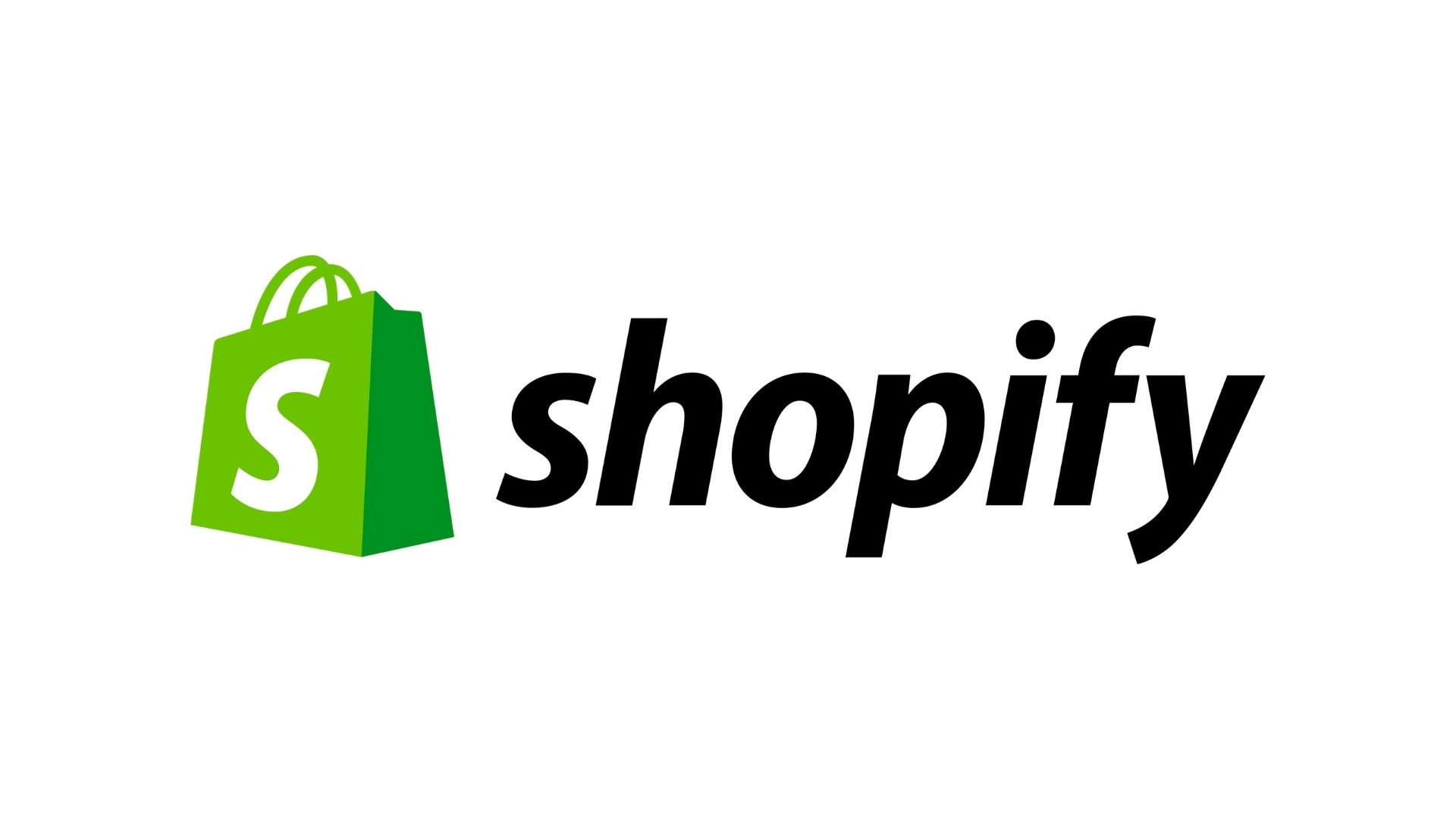Our Verdict
Shopify is arguably the best all-in-one e-commerce solution for small- to medium-sized businesses, with a fantastic selection of tools to help you build and manage your store.
For
- Broad feature set
- Powerful commerce tools
- Easy to use
Against
- Transaction fees on third-party gateways
- Limited flexibility
Why you can trust Creative Bloq
Shopify is one of the most popular e-commerce platforms in the world. It provides users with all the tools they need to build their website and start selling products online (or even offline using the Shopify POS app) right out of the box.
It’s incredibly easy to use and perfect for beginners with its simplified interface and quick setup process. At the same time, it offers developer-friendly features for experienced business owners that want more control.
But is it up there with the best website builders around, and is it any good for people who want to sell their art, like some of the best website builders for artists? We put Shopify to the test to see if it lived up to expectations. We looked at three important factors that users often look for in website builders and e-commerce platforms: ease of use, themes, and support.
In this in-depth Shopify review, we take a closer look at everything this e-commerce giant has to offer.
Shopify key features
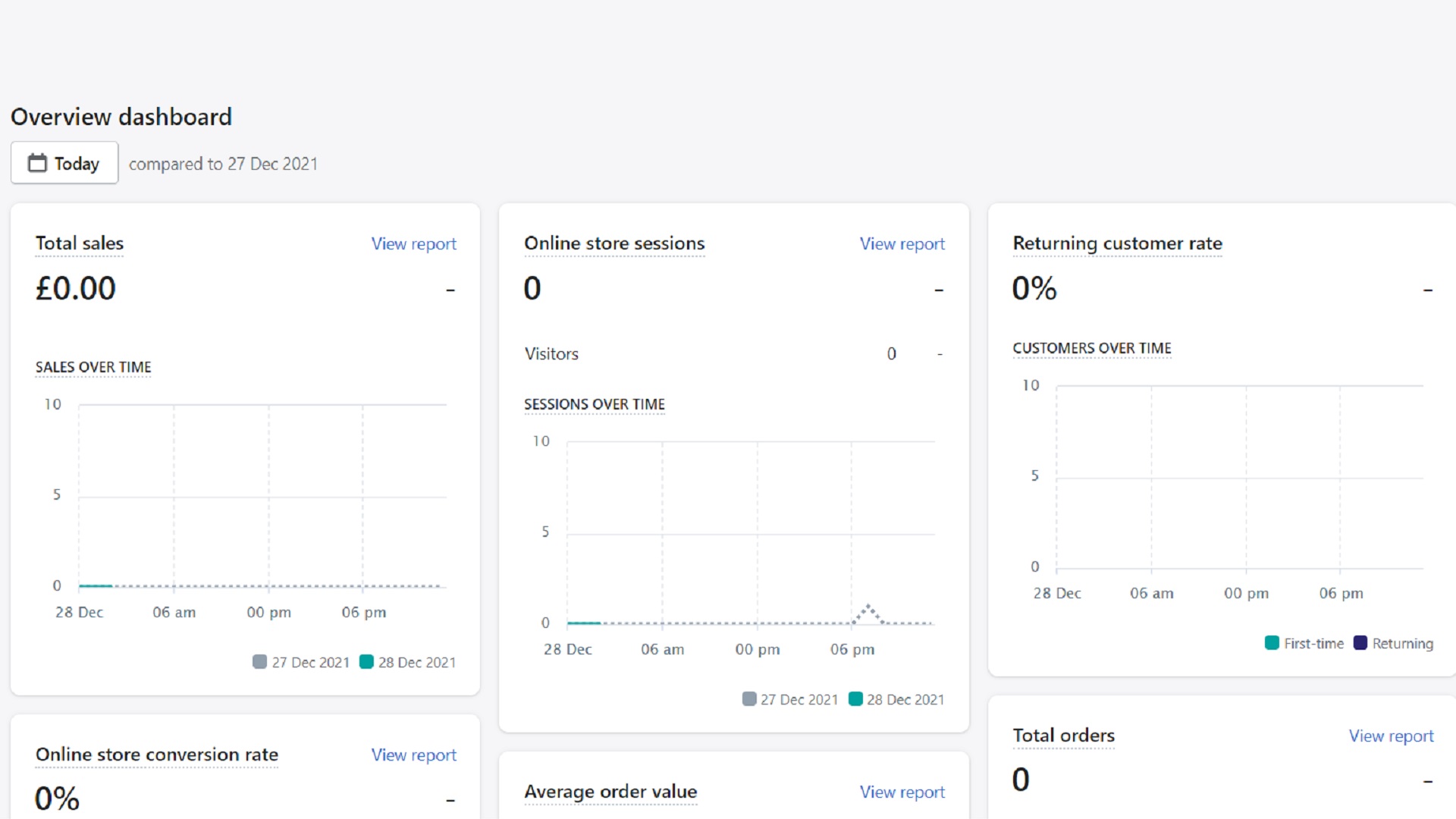
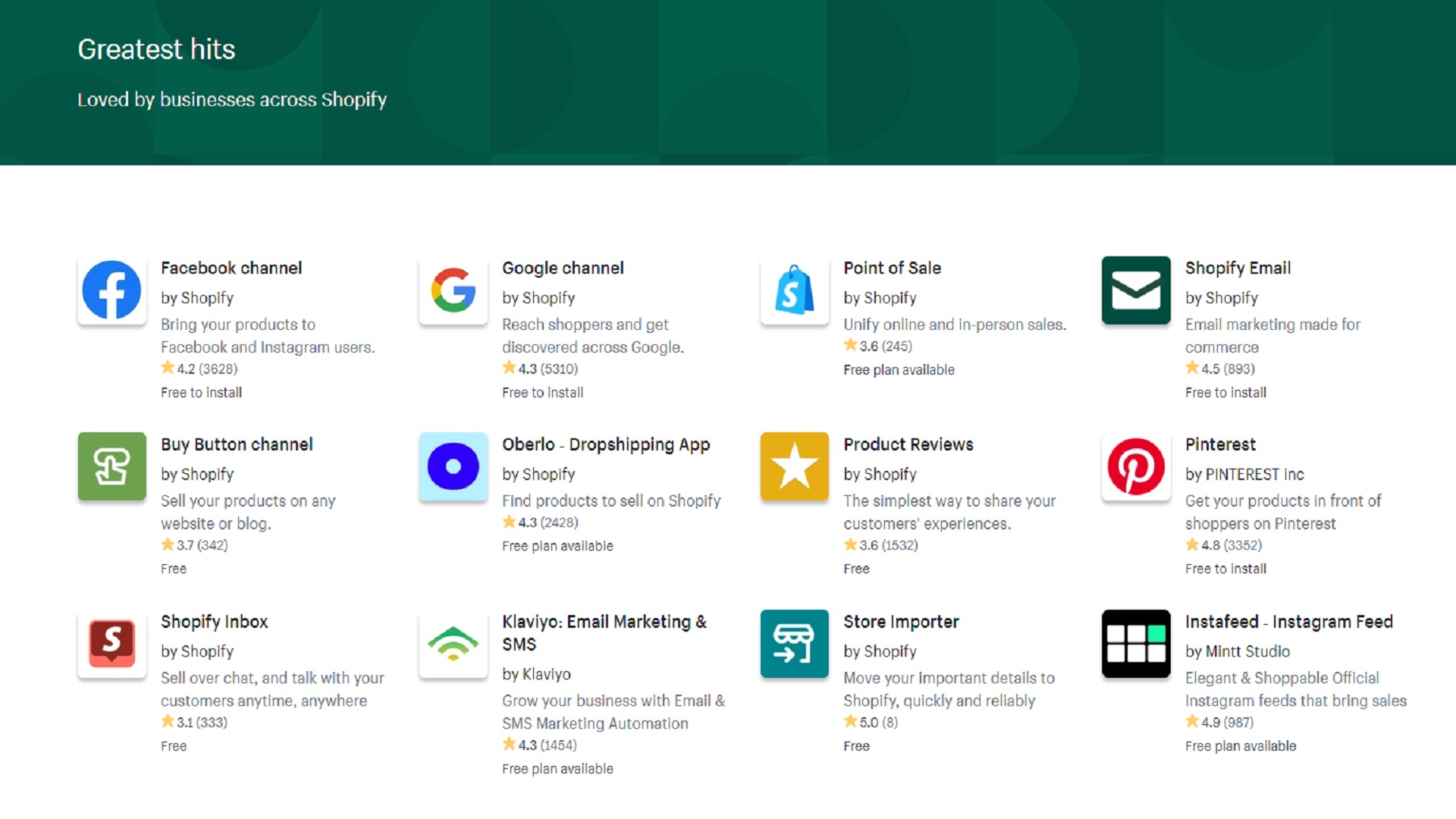
Shopify is an all-in-one e-commerce solution that comes with a lot of built-in features to help you manage your online store.
In addition to the core commerce management features (like order and product management, and shipping and tax features), you get access to built-in marketing tools that can help you to drive sales. From the Marketing tab, you can launch ad campaigns on Facebook, Instagram, or Snapchat and run email marketing campaigns with Shopify Email.
With Shopify Email, you can create basic branded e-newsletters using templates and a visual editor and send them out to your subscribers. It isn’t nearly as powerful or flexible as dedicated email marketing tools like MailChimp, but it’s a good option for smaller businesses that don’t need anything too sophisticated.
You can keep track of important metrics like your total sales, returning customer rate, store sessions, average order value, and much more from the Analytics tab on the main dashboard. You can also generate preset reports or create custom reports in just a few clicks.
If Shopify’s built-in functionality isn’t enough, you can visit the app store to install third-party apps that add new features. The marketplace contains over 7,000 apps, which is more than any other hosted e-commerce platform, so there’s almost no limit to what you can do.
This extensibility is one of the main reasons to use Shopify over its competitors, but it also means you might have to piece together lots of paid-for apps to set up your store the way you want it. And if you add too many apps, it can have a negative impact on your performance.
Shopify competitors
| Header Cell - Column 0 | Shopify | BigCommerce | Squarespace |
|---|---|---|---|
| Score | 4.5/5 | 4.5/5 | 4/5 |
| Pros | Powerful store management tools | No additional transaction fees | Very attractive website templates |
| Cons | Transaction fees if you use a third-party payment gateway | No abandoned cart feature in Standard plan | Few e-commerce features |
| Verdict | Shopify is the world’s leading hosted e-commerce solution, with a broad feature set and incredibly easy-to-use interface. | BigCommerce is another e-commerce giant with a similar feature set to Shopify and no additional transaction fees on any plan. | Squarespace is more of a general-purpose website builder than an e-commerce platform, but its templates are stunning. |
| View deals | Visit Site | Visit Site | Visit Site |
What's new in Shopify?
Shopify is constantly releasing new features and tweaking its existing features to improve the user experience. You can view a breakdown of all of these changes in its changelog, which is usually updated at least weekly.
One of the most notable new features added in a recent update was Online Store 2.0 (OS 2.0). It is a new and improved online store experience with an upgraded theme architecture and more flexible customisation options. It unlocks all kinds of new opportunities, including the ability to add sections to all pages (rather than just the home page).
Other recent updates include the introduction of new configuration options for Shopify checkout and the addition of even more real-time insights in Live View.
Shopify pricing
Shopify offers three main plans: Basic Shopify ($29/mo), Shopify ($79/mo), and Advanced Shopify ($299/mo). Each of these offers the same core features, but as you pay more, you unlock additional advanced features and lower third-party payment gateway transaction fees.
In addition to the above, there are two other plans. Shopify Lite is an inexpensive, very limited plan that only provides you with the ability to add buy buttons on your existing website. You can’t access the store builder and other important tools. Shopify Plus is a very expensive option for enterprise-level businesses with very high sales volumes. A 14-day free trial is also available.
| Plan type / Feature | Shopify Lite | Basic Shopify | Shopify | Advanced Shopify | Shopify Plus |
|---|---|---|---|---|---|
| Cost per month | $9 | $29 | $79 | $299 | From $2000 |
| Cost per year | $108 | $313.20 | $853.20 | $3229.20 | From $24000 |
| Store builder | X | ✓ | ✓ | ✓ | ✓ |
| Staff accounts | NA | 2 | 5 | 15 | Variable |
| Inventory locations | NA | Up to 4 | Up to 5 | Up to 8 | Variable |
| Third-party transaction fees | None | 2% | 1% | 0.5% | Variable |
How easy is Shopify to use?
Shopify is designed to be as easy to use as possible. Compared to other solutions like WooCommerce, it's incredibly straightforward to work with and has a clean, intuitive interface. It’s also simple to set up your store as a complete beginner—Shopify walks you through the whole process step by step.
When you first sign up, you're greeted by a setup wizard that customizes your experience based on your answers to questions about your business. On the main dashboard, you'll then see a helpful checklist detailing the steps you need to complete to get ready to sell online. It'll prompt you to add a product, customize your theme, connect your domain, and set up payments.
On the left, like most other website builders, you'll see a menu through which you can access all the main features. Adding a product couldn't be easier. Simply click the Add product button or navigate to the Products tab from the left-hand sidebar.
Then, all you have to do is fill out the product details with relevant information like the title, description, image, price, and stock keeping unit (SKU). Of course, you also have the option of importing products in bulk by uploading a CSV file if you’d prefer.
You can customise your theme using the intuitive visual editor with no coding required, set up discounts in a few clicks, and do everything else you need to do to build and manage your store easily from the main dashboard.
The tradeoff to Shopify's ease of use is limited flexibility. For example, the theme/page editor is very rigid compared to traditional WordPress page builders or dedicated page builders like Instapage.
How good are Shopify themes?
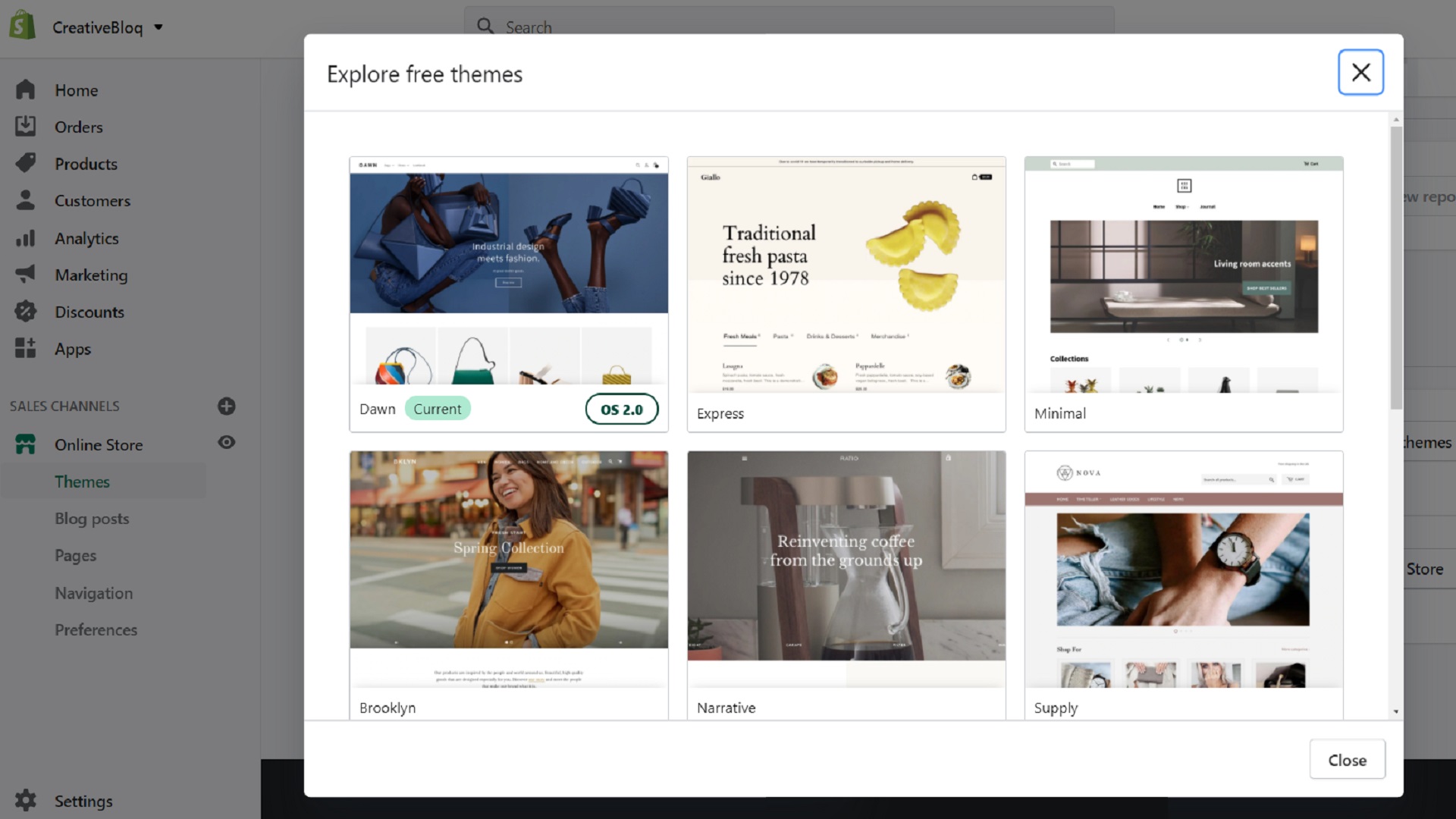
Themes control the design, organisation, and features of your store. Shopify provides a choice from 10 free themes but crucially, only one of those is an OS 2.0 theme – a new and improved theme format that provides more advanced editing capabilities.
This is in a similar ballpark to BigCommerce but falls significantly short of other website builders like Squarespace and Wix, both of which offer dozens of free templates to choose from.
That said, it isn't just about quantity, it's about quality too. Shopify might not offer a large selection of free themes, but those that it does offer are all modern, professionally designed, and fully responsive.
If you don't like any of the free themes, you have the option of purchasing a premium theme instead. There are currently 71 paid themes in the Shopify theme stores, 63 of which are OS 2.0.
To help you narrow down the list, you can sort it by industry, layout, catalogue size, or design. As with the free themes, they're all well built, and there's plenty of variety. Premium themes range in price from around $150 to $350.
How responsive is Shopify's customer support?
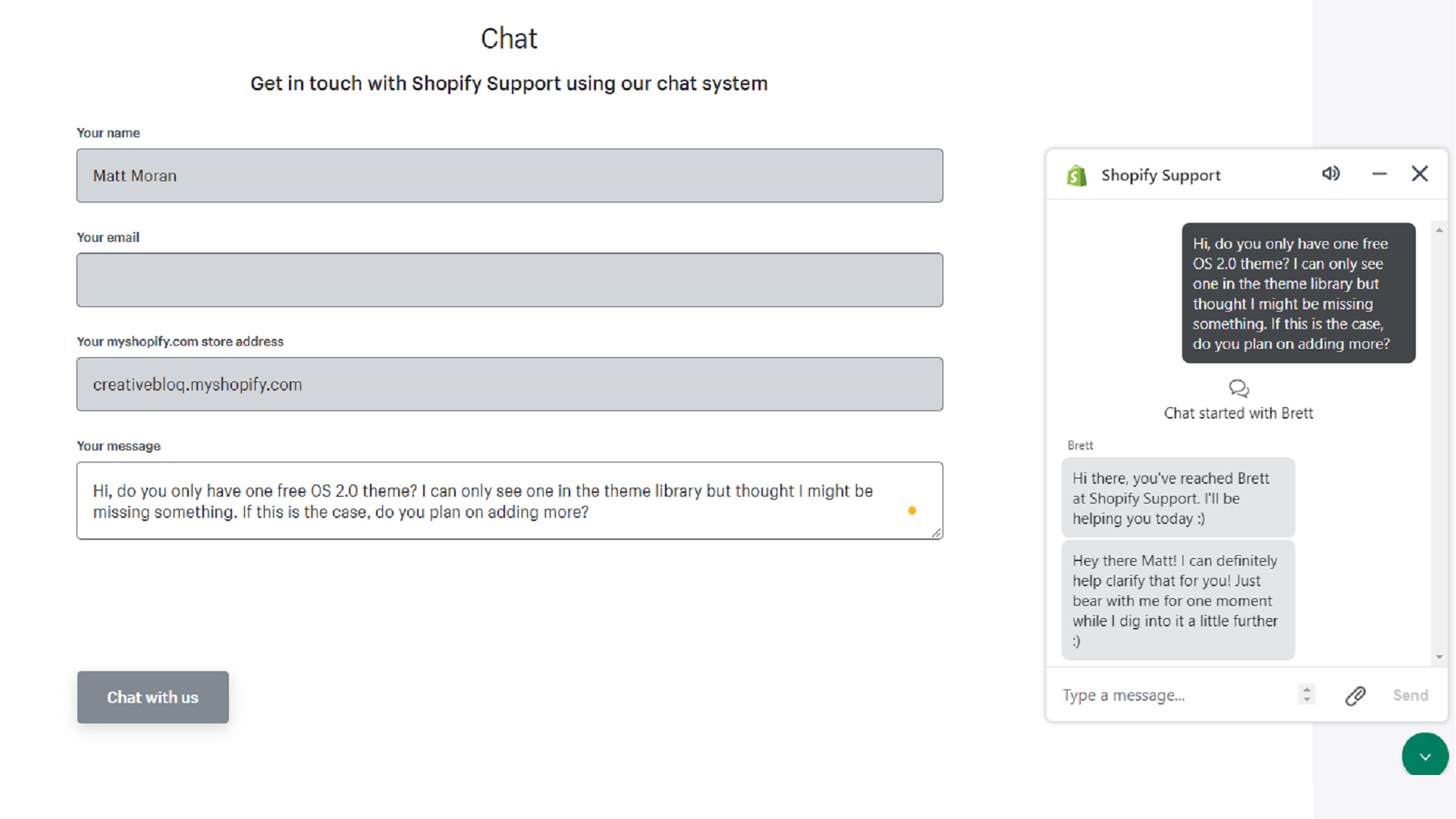
Shopify offers four different support channels: chat, email, phone, and community (forum) support. Of these, Shopify claims that the most convenient way to get support is through chat. It also claims that chat wait times are “almost non-existent.” That is impressive if true.
We wanted to find out for ourselves so we asked a straightforward question to the support team via live chat. Immediately, we were connected to an advisor and received a canned greeting response. Then, within a minute, we received a direct reply to our question – but not a full answer.
It took around two to three minutes in total for the advisor to provide us with all the information requested, which isn't bad at all considering some other platforms have response times of an hour or more.
Our one gripe is that you can't open up the chat system from your Shopify dashboard. You have to go to the Shopify help centre first and start from there, which means opening up another tab. This is a very minor complaint, though. On the whole, we give Shopify top marks for support.
Alternatives to Shopify
Shopify’s a fantastic e-commerce platform, but it’s not the right fit for everyone. The fact that it charges transaction fees when you use a third-party payment gateway is a deal-breaker for some businesses, particularly those with a high turnover as the fees add up quickly the more you sell.
If you don’t want to worry about transaction fees, consider BigCommerce. It’s one of Shopify’s biggest competitors and offers an enterprise-level plan that may be a better fit if you’re running a larger business with high sales volumes. The Enterprise plan doesn’t come cheap but the Essentials plan starts at $29.95/month, which is only a little more than Shopify’s most inexpensive plan.
Squarespace is another affordable website builder that could be a good choice if you’re running a very simple store with a limited number of products and sales. It’s an all-purpose website builder, so it’s targeted more towards people looking to build personal websites and portfolios. However, it has a range of fantastic e-commerce templates that you can use to build an online store.
It’s missing some of the more advanced e-commerce features, but its template selection is out of this world. If you’re more concerned with the aesthetics than the functionality of your site, it’s definitely worth considering. Read our Squarespace review for more information.
| Header Cell - Column 0 | Shopify | BigCommerce | Squarespace |
|---|---|---|---|
| Transaction fees | Yes (unless using Shopify Payments) | No | No (on Commerce Basic and Advanced plans) |
| Themes / Templates | 81 | 180+ | 140+ |
| Support | Help center and 24/7 live chat, email, and phone support | Help center and 24/7 live chat, email, and phone support | Help center, 24/7 email support, live chat support Monday-Friday 9am-3pm |
| Basic plan | $29/mo | $29.95/mo | $26/mo |
Should I use Shopify?
Shopify deserves its reputation as the top hosted e-commerce solution on the market. It comes with powerful built-in e-commerce features and almost limitless extensibility with third-party integrations. It’s both very easy to use for beginners and flexible enough for established businesses, and it offers probably the best support in the industry.
The main area it falls down in is when it comes to transaction fees – you can’t escape them without using Shopify Payments. And while Shopify Payments is great, it’s not available in every country, and many businesses need to use other gateways like Stripe or PayPal. It’s also not as flexible as BigCommerce Enterprise or WooCommerce, so it’s probably not the best fit for enterprise customers.
However, if you’re a small- to medium-sized business looking for a hassle-free, full-featured commerce solution to power your online store, there’s no better option.
Read more: Wix vs Shopify

Thank you for reading 5 articles this month* Join now for unlimited access
Enjoy your first month for just £1 / $1 / €1
*Read 5 free articles per month without a subscription

Join now for unlimited access
Try first month for just £1 / $1 / €1
out of 10
Shopify is arguably the best all-in-one e-commerce solution for small- to medium-sized businesses, with a fantastic selection of tools to help you build and manage your store.
